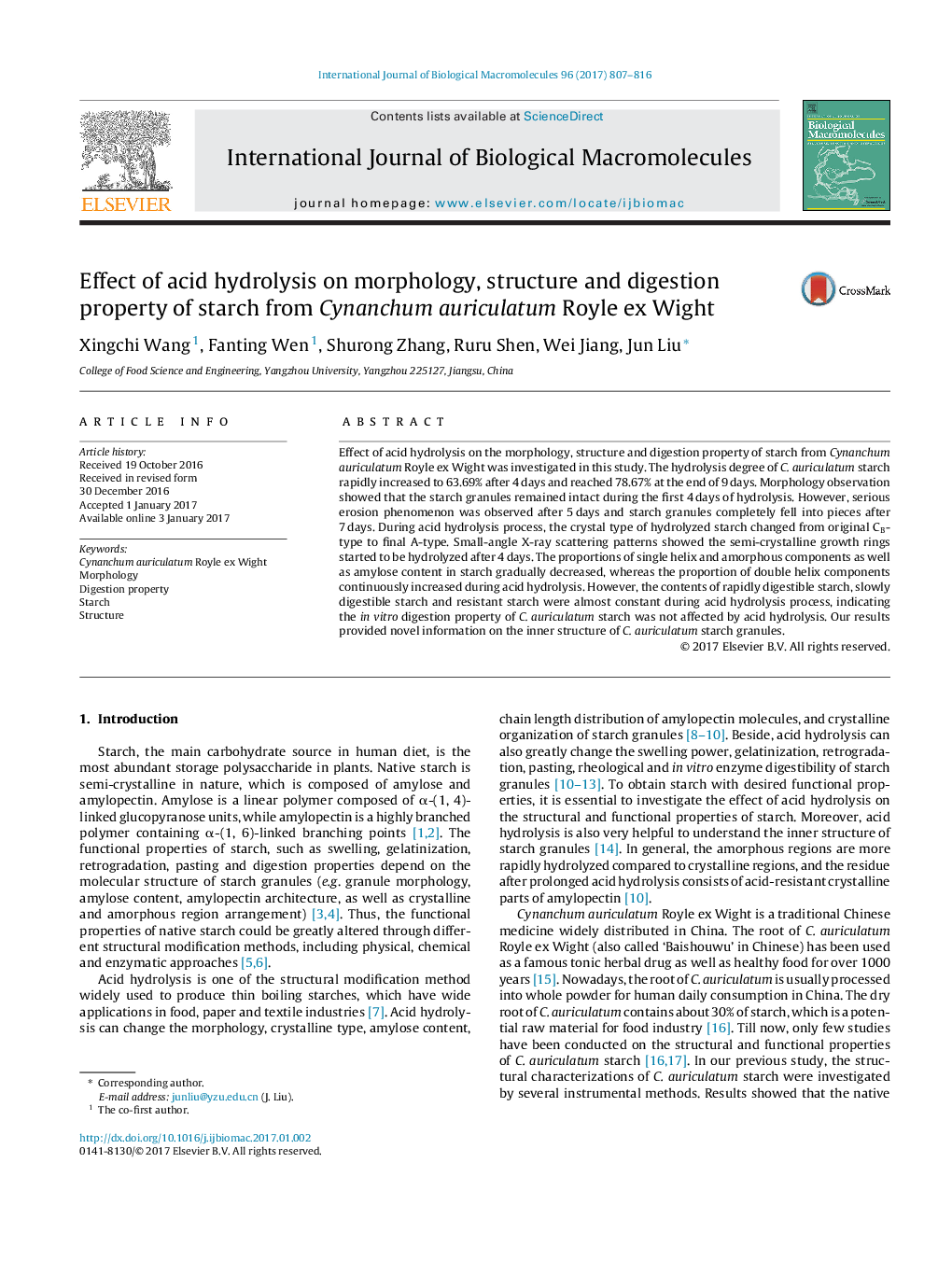| Article ID | Journal | Published Year | Pages | File Type |
|---|---|---|---|---|
| 5512239 | International Journal of Biological Macromolecules | 2017 | 10 Pages |
â¢A typical two-stage hydrolysis process was observed for C. auriculatum starch.â¢Amorphous regions were degraded rapidly at the early stage of hydrolysis.â¢The semi-crystalline growth rings were gradually hydrolyzed after 4 days.â¢The crystal type of acid hydrolyzed starch changed from CB-type to final A-type.â¢Acid hydrolysis caused RDS and SDS contents increased but RS content decreased.
Effect of acid hydrolysis on the morphology, structure and digestion property of starch from Cynanchum auriculatum Royle ex Wight was investigated in this study. The hydrolysis degree of C. auriculatum starch rapidly increased to 63.69% after 4Â days and reached 78.67% at the end of 9Â days. Morphology observation showed that the starch granules remained intact during the first 4Â days of hydrolysis. However, serious erosion phenomenon was observed after 5Â days and starch granules completely fell into pieces after 7Â days. During acid hydrolysis process, the crystal type of hydrolyzed starch changed from original CB-type to final A-type. Small-angle X-ray scattering patterns showed the semi-crystalline growth rings started to be hydrolyzed after 4Â days. The proportions of single helix and amorphous components as well as amylose content in starch gradually decreased, whereas the proportion of double helix components continuously increased during acid hydrolysis. However, the contents of rapidly digestible starch, slowly digestible starch and resistant starch were almost constant during acid hydrolysis process, indicating the in vitro digestion property of C. auriculatum starch was not affected by acid hydrolysis. Our results provided novel information on the inner structure of C. auriculatum starch granules.
